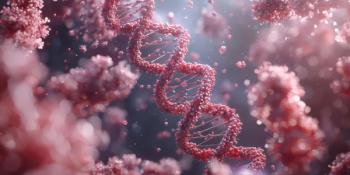
Brain Protein Found to Contribute to Pancreatic Cancer Development
Investigators hope discovery will lead to new treatments for pancreatic cancer.
A protein once thought to only be involved in the development of neurons in the brain also plays a major role in the development of pancreatic cancer, according to a study published in Cancer Discovery.
Pancreatic cancer is notoriously difficult to treat since tumors are often fibrotic, meaning they develop extra connective tissue throughout the pancreas. This tissue helps pancreatic cancer to grow while also providing the cancer a protective barrier against the immune system and cancer drugs, according to the study.
Investigators discovered that the protein, Netrin-G1, protects cancer cells from the immune system while also supplying nutrients. According to the study, knowing the function of Netrin-G1 can help provide a base for new pancreatic cancer treatments.
“We saw that many patients express Netrin-G1 in CAFs and that these patients tend to survive for a shorter time so in the future detection of Netrin-G1 could be used to help diagnose patients. We believe that limiting Netrin-G1 function provides the starting point for the design of new treatments in a type of cancer that is in dire need for effective therapies,” said study leader Edna Cukierman, PhD, in a press release.
Investigators plan to continue studying Netrin-G1 in order to determine the most practical way of detecting it in patients. Additionally, they hope to direct the industry toward the development of a Neterin-G1 blocker.
REFERENCE:
Brain protein could be starting point for new treatments for pancreatic cancer [News Release] November 18, 2020; Philadelphia, PA. Accessed November 19, 2020.
Newsletter
Stay informed on drug updates, treatment guidelines, and pharmacy practice trends—subscribe to Pharmacy Times for weekly clinical insights.


















































































































































































































